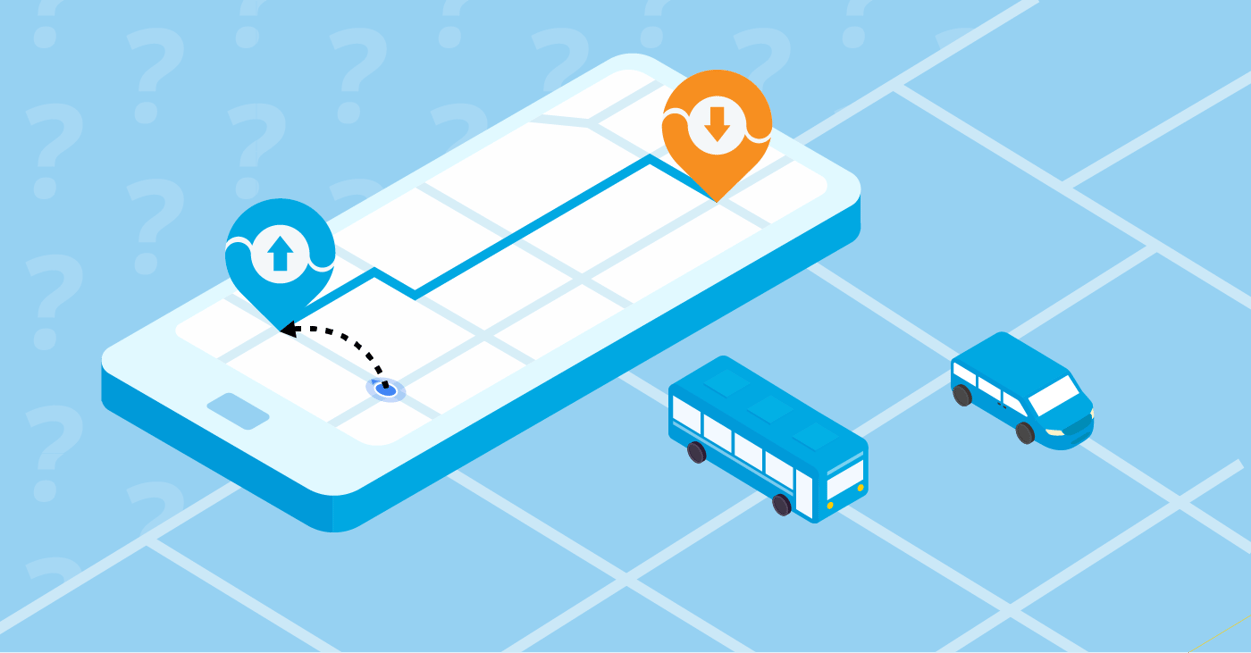Welcome to our Microtransit Misconceptions series, where we use detailed data and real transit examples to debunk common myths about on-demand public transit. Let’s dive in:
MYTH: On-demand isn't new just because it now has an app. If it hasn’t gotten traction before, why should it now?
REALITY: While on-demand is not new to many countries around the world, advances in both technology and consumer expectations — not to mention the highly variable demand patterns resulting from the COVID-19 crisis — give on-demand renewed relevance today.
The basics of on-demand transport have indeed been around for many decades, but these have largely been limited to “dial-a-ride” and paratransit services targeted at older riders, as well as what the International Association of Public Transport terms “informal transport” in areas without significant public funding for transit services.
In the meantime, the delivery of microtransit — and, indeed the context around it — have changed vastly. The oft-made argument that, “ It didn’t work in the past, so it won’t work now, ” is an obvious thing to say, but it ignores the impact of societal innovation.
Here’s how on-demand transit has changed.
- Technology has changed. Earlier incarnations of on-demand transit were technology-light, often with highly manual scheduling and operating systems making them costly to run. They also sat entirely in isolation from the rest of the public transportation network, with no integration. Today, it’s possible to automate virtually all on-demand scheduling and planning processes. This unlocks better advanced planning, greater routing efficiencies, and much simpler management. It’s not just about a fancy new rider app.
- Consumer expectations have changed. At a time where creating compelling alternatives to the private car is so important, delivering services in ways that consumers both expect and love is vital — both to retain existing customers and to attract new riders. If public transportation does not deliver the same level of experience as people now expect in other areas of their lives (such as shopping and deliveries) it will only fall further behind.
- Demand levels have changed. Fixed route buses are the perfect solution for high volume, high predictability bus demand. The impact of COVID-19 has meant that, in large swaths of the world, this is simply not the reality. Microtransit solutions can meet this new challenge.
Still skeptical? Just take a look at the huge swath of technology that can be incorporated into the microtransit networks of today. From local payment integrations to autonomous vehicle and electric fleet management, it’s quite clear that this ain’t your old dial-a-ride service.
It’s always easy to find a reason not to add technology to existing infrastructure, but when it comes to 21st-century public transportation, the status quo just isn’t working. Many of the worries around on-demand are rooted in myths and misconceptions that prevent the worldwide transportation community from making necessary progress. If we’re serious about connecting all households to the services they need, addressing COVID-19 challenges, mitigating climate change, and preventing massive congestion and pollution in our cities, now is the time for new ideas.
This article is one of five data-driven stories debunking common misconceptions about microtransit:
- On-demand public transit is too expensive.
- Cities have already tried on-demand transit, and it failed.
- On-demand isn't new — you've just stuck an app on it.
- People prefer the predictability of fixed route transit networks.
- App-based transit means people without smartphones miss out.



%206.png?width=71&height=47&name=The%20Buzz%20Blog%20Hero%20(1750%20x%201200%20px)%206.png)
